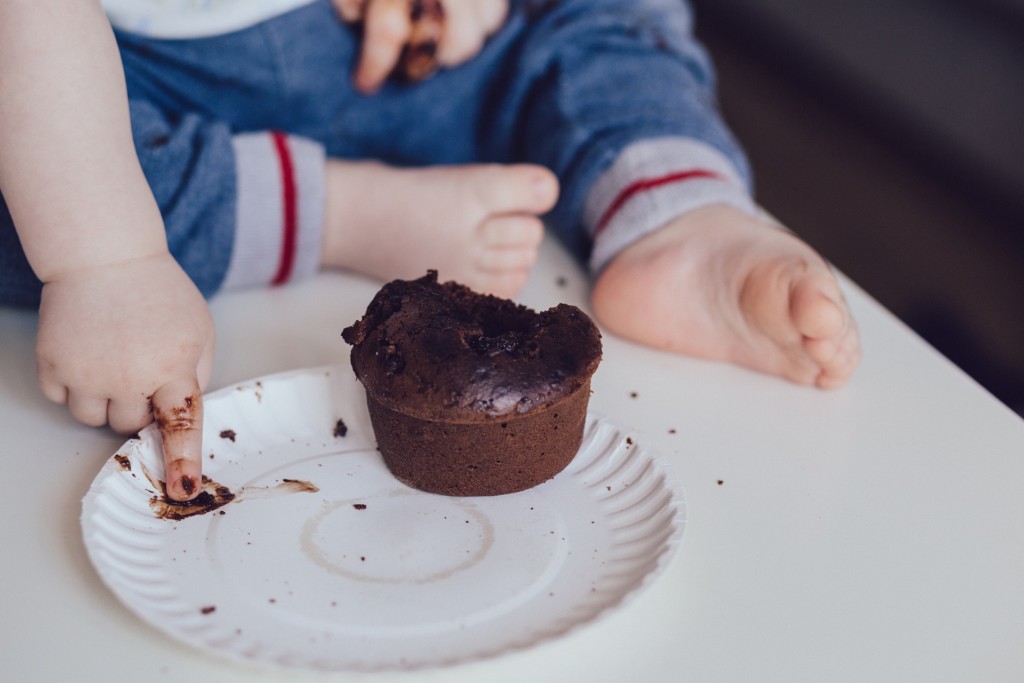
My 10-month-old son was about to try eggs for the very first time and I was pumped. Armed with my Fuji digital camera to document the milestone, I watched him taste the eggs, then freeze. I will never forget the terrified look on his face. While he knew something was very wrong, I wasn’t at all prepared for what was going to be the scariest 2 hours of our lives together.
Almost instantaneously my son’s hands, face, and mouth were covered in hives. His eyes swelled shut and he began to projectile vomit. I previously read about possible food allergies in babies, and brushed it off. Food allergies didn’t really run in my family so it wasn’t on my radar. But I knew that was what this was. Anthony was crying hysterically, clearly in pain. I resolved that if he did so much as to cough even once, I was calling 911. I nursed him and he fell asleep. When he woke up he seemed fine. No hives, just tired. I called my pediatrician that same day and began our journey as a food allergy family.
I never thought I would be a food allergy mom. It is a very hard, isolating road to walk. One in 13 kids have a food allergy, so us food allergy parents are not alone. As our community grows, some misconceptions run rampant. So, whether you are a food allergy parent or know one, take a look at what you might not know about food allergies.
1. It’s NOT just peanuts. I know when most people think of food allergies, peanuts immediately come to mind. For whatever reason, peanut allergies have been picked up on by the media, but the other allergens haven’t gained as much attention. Did you know: that in children, the top food allergies are milk and egg? Not peanuts. Milk and egg. And we aren’t talking about lactose intolerance here. The way some people can have deadly anaphylactic reactions to peanuts, people can also have an anaphylactic reaction to ANY food. The top 8 in the U.S. are milk, egg, wheat, soy, peanuts, tree nuts, fish, and shellfish.
2. The severity of past reactions doesn’t predict the severity of future reactions. Sounds crazy, right? You would assume the reaction would remain consistent. If you eat something and get a few hives, your allergy is mild and you don’t really have to worry about it being worse. Even though that makes logical sense, our bodies don’t work that way. Here is what the Food Allergy Research and Education organization says:
“There are no mild or severe food allergies—only mild to severe reactions. What caused a mild reaction in the past may lead to a severe reaction in the future, and vice versa. Never let your guard down. Always take precautions to prevent allergic reactions before they happen.”
3. Read the WHOLE label, EVERY time. My kids and I have a saying: “if you can’t read it, you can’t eat it!” This is a nice reminder not to assume the ingredients of something. You never know what something truly has in it unless you can see the ingredients with your own eyes. Also, read the whole label. You may be tempted to look for the bold statement at the bottom of some ingredient lists, but THESE STATEMENTS ARE COMPLETELY VOLUNTARY.
Additionally, please fight the temptation to assume that something safely consumed in the past is safe to consume now. In our 8 years of managing allergies, we have had many times where something that was once safe, changed ingredients or formulas, making them unsafe. It doesn’t matter if the store is organic, or you have been buying the product for 10 years. They can change ingredients and not alert anyone about it. The only way to ensure safety is to read the entire label, every time.
4. Know the symptoms. Many people think that the only thing to look for as a sign to use their emergency action plan is trouble breathing. That’s not true. There are many other symptoms of a serious reaction.
- Trouble breathing
- Wheezing
- Hoarseness (changes in the way your voice sounds)
- Hives
- Severe itching
- Swelling of your face, lips, mouth, or tongue
- Skin rash, redness, or swelling
- Fast heartbeat
- Weak pulse
- Feeling anxious/sense of impending doom
- Confusion
- Stomach pain
- Losing control of urine or bowel movements
- Diarrhea or stomach cramps
- Vomiting
- Dizziness, fainting, or “passing out”
Epi-pens save lives. I have had to inject my child four times now. Four times, I saw my child bounce back almost instantly after getting injected with this medicine. Let professionals handle this, and don’t be afraid of epinephrine. It truly is life-saving.
Speaking of epi-pens, always carry two. One may jam, or the ambulance might take longer than you think to arrive. You need to have access to two, quickly.
I hope this helps you on your journey as a food allergy parent or a support system for food allergy families. For more information, Food Allergy Research & Education is full of resources, infographics, powerpoints, and a lot of other helpful resources.









